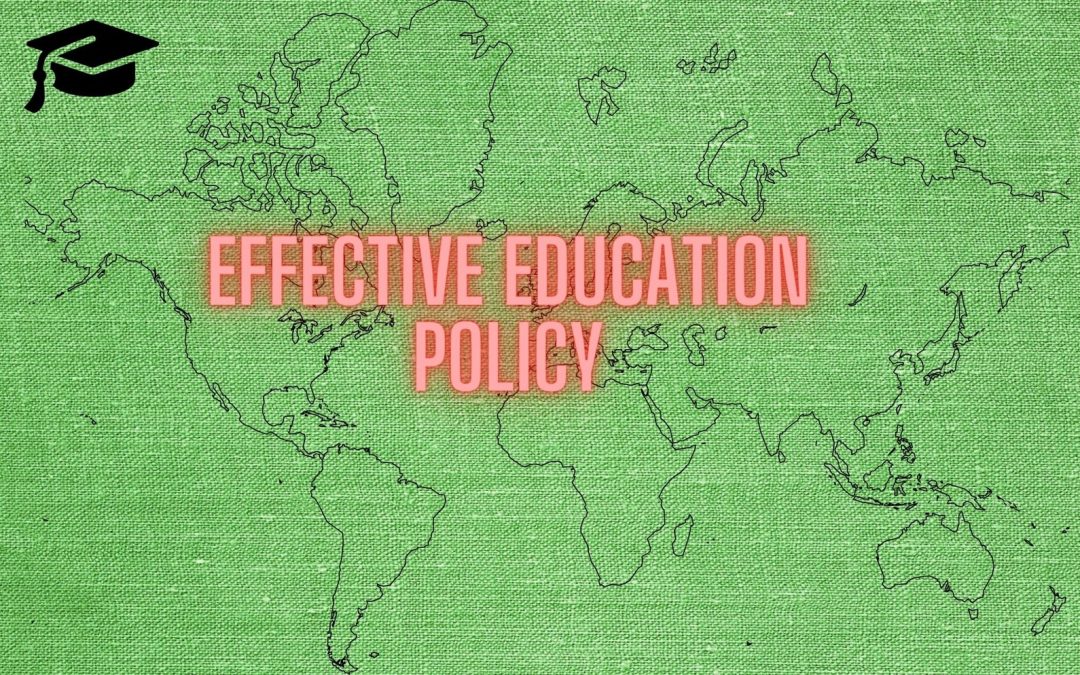No Results Found
The page you requested could not be found. Try refining your search, or use the navigation above to locate the post.

Orphans are among the most vulnerable members of society, often facing a myriad of challenges that can impact their well-being and future prospects. Recognizing the importance of protecting the rights of orphans, international organizations and governments have established guidelines and laws to ensure their safety, education, and overall well-being.
However, the implementation of these rights can vary widely from country to country, and many orphans continue to face significant obstacles in accessing their rights. In this article, we will explore the rights of orphans, the challenges in implementing these rights, and the steps that can be taken to ensure that every orphan has the opportunity to thrive.

Important Note: This list is inspired by the United Nations Convention on the Rights of the Child (UNCRC). It’s crucial for governments to ratify the UNCRC and then work diligently to adapt these general rights into specific laws, policies, and programs tailored to the needs of orphans within their own nation.
Orphans Rights Implementation and Governance
There’s a substantial gap between having laws protecting orphan rights and their effective implementation in countries like Pakistan, India, and many African nations. Here’s a breakdown of the challenges and some suggestions for how things could improve:
Finding reliable statistics on the implementation of orphan rights legislation in these regions is difficult. This in itself highlights a lack of proper monitoring and data collection. However, reports from humanitarian organizations, such as UNICEF, SOS USA and Save the Children, often provide qualitative and anecdotal evidence of the challenges:
It’s important to note:
This is a complex issue with no quick fixes. However, raising awareness and promoting transparency can pressure those in power to prioritize the well-being and rights of the most vulnerable children
The page you requested could not be found. Try refining your search, or use the navigation above to locate the post.

The journey of parenting, always an expedition of love and learning, has begun to weave through the digital landscape, introducing new tools and allies. Among them, AI and parenting apps stand out, reshaping how we nurture, educate, and bond with our children. Let’s embark on a journey to understand this evolution and how it touches our lives. This article will provide 15 Benefits and Risks of Using AI Parenting Apps.
Remember the days when our parents would chart our growth milestones in baby books? Fast forward to today, and you’ll find modern parents tapping away on their smartphones, using parenting apps powered by Artificial Intelligence (AI) to track everything from sleep patterns to cognitive development. It’s a new world, indeed.
Gone are the days when parenting advice was passed down through generations or found in the odd parenting book. Today’s parents have a world of information at their fingertips with great articles on modern parenting . Technology, particularly AI, has transformed numerous sectors, and parenting is no exception.
From healthcare, where AI predicts patient care needs, to customer service bots that handle inquiries, AI’s footprint is everywhere, making services more personalized and efficient.
Modern-day parents lean heavily on parenting apps. These aren’t just digital diaries or trackers; they’re sophisticated tools that learn and adapt to provide personalized insights and advice.
AI, in simple terms, is intelligence demonstrated by machines. In the context of parenting apps, AI analyzes data from user inputs to offer personalized recommendations and insights, making parenting a bit easier and more informed.
From analyzing sleep patterns to suggest better bedtime routines to tracking developmental milestones and offering activity suggestions, AI integrates seamlessly, making these apps not just informative but interactive.
Imagine an app that can decode your baby’s cries or a virtual tutor that adapts to your child’s learning pace. These are not figments of imagination but real applications making strides in parenting assistance.
Every child is unique. AI-driven apps analyze individual learning styles and developmental needs to customize activities, thus fostering optimal growth. AI algorithms can analyze data about a child’s behavior, preferences, and developmental stage to provide personalized recommendations for activities, books, and educational resources.
With features like geofencing and activity monitoring, these apps offer peace of mind to parents, ensuring the safety of their children even when they’re not physically present. AI algorithms can analyze data about a child’s online activity and provide alerts to parents about potential safety concerns, helping to keep children safe online.
Planning meals, scheduling doctor’s appointments, or keeping track of vaccination dates—AI-powered apps help streamline these tasks efficiently, so parents can focus more on quality time with their children. AI-powered scheduling and organization tools can help parents manage their time more effectively, reducing stress and increasing productivity. see this article 7 Cost-Efficient Organization Tips For Busy Parents
AI-based tutoring and homework help features can provide additional support for children’s learning, helping them to succeed academically. Check out this resource 10 Digital Tools To Enhance Creative Learning In Schools
AI algorithms can analyze data about a child’s behavior and provide insights into their emotional well-being, helping parents to identify potential issues and provide appropriate support.
AI-powered communication tools can help parents stay connected with their child’s school and teachers, facilitating better communication and collaboration. Lets continue to the next Benefits and Risks of Using AI Parenting Apps
AI-powered health monitoring tools can track a child’s physical activity, sleep patterns, and other health metrics, providing valuable insights into their overall well-being.
AI-based language learning tools can help children develop language skills, providing personalized lessons and practice exercises.
AI algorithms can analyze data about a child’s emotional state and provide suggestions for activities and resources to help them manage their emotions.
AI-powered parenting advice tools can provide personalized recommendations for parenting strategies and techniques, helping parents navigate the challenges of raising children.
Apps that encourage joint activities or allow tracking of developmental milestones can foster conversations and strengthen bonds between parents and children.
Data collected through these apps can offer insights into a child’s behavior, preferences, and needs, aiding parents in making informed decisions about everything from education to daily routines.
Parenting apps can offer tools to help manage and monitor screen time, ensuring children enjoy technology’s benefits without succumbing to its addictive pitfalls.
AI-powered apps offer a world of knowledge, customized to fit a child’s age, learning pace, and interests, ensuring that learning is always engaging and effective.
Apps can also play a role in enhancing emotional intelligence and social skills, offering scenarios and games that teach empathy, sharing, and cooperation.
With great technology comes great responsibility. The data shared with AI apps pose privacy and security risks, urging a need for stringent data protection measures.

As helpful as these apps are, there’s a thin line between assistance and over-reliance. It’s crucial to strike a balance to ensure that technology supports rather than replaces human interactions in parenting.
Technology should be a tool, not a crutch. Encouraging traditional play, outdoor activities, and familial bonding alongside technological assistance is vital.
From augmented reality that brings learning to life to virtual assistants that manage family schedules, the future of AI in parenting is bright and boundless.
As parents, our role in navigating this digital landscape is crucial. Guiding our children through the vast world of technology while instilling traditional values is our balancing act on this journey.
In the tapestry of modern parenting, AI and parenting apps are both a thread and a tool, weaving new patterns of learning, bonding, and nurturing. As we embrace these technologies, let us do so with mindfulness, ensuring that the digital age serves to enrich our family lives, not dictate them.
1- What are AI parenting apps?
AI parenting apps are mobile applications that use Artificial Intelligence to offer personalized parenting advice and child development insights.
2- How can AI help in my child’s education?
AI can customize learning experiences, making education more engaging and effective for your child.
3- Are there privacy risks with using AI in parenting apps?
Yes, sharing personal information with any app comes with privacy risks. It’s important to use apps with strong data protection measures.
4- How can I limit my child’s screen time without causing conflict?
Set clear boundaries, be consistent, and also engage in alternative activities as a family to naturally reduce screen time.
5- What should I look for in a safe and effective parenting app?
Look for apps with strong privacy policies, positive reviews, and ones that offer a balanced approach to parenting assistance.

In an increasingly digital world, the landscape of employment is undergoing a dramatic transformation. Remote work, once a niche option, has rapidly become a mainstream choice for professionals across various industries. This shift towards telecommuting presents unique challenges and opportunities for job seekers. In this context, staffing agencies emerge as pivotal players, offering invaluable resources and guidance to those navigating the remote job market. This article explores how remote job seekers benefit from agencies to their advantage, ensuring a successful and fulfilling career path in the digital age.
The COVID-19 pandemic accelerated the adoption of remote work, breaking geographical barriers and redefining traditional office dynamics. Companies worldwide have recognized the benefits of remote work, such as reduced overhead costs and access to a broader talent pool. However, this transition is not without challenges. Remote job seekers often face hurdles such as identifying legitimate opportunities, standing out in a global talent pool, and adapting to virtual interview processes.
Staffing agencies play a crucial role in bridging the gap between remote job seekers and potential employers. These agencies specialize in understanding the nuances of the remote job market. They offer a range of services, from resume optimization to interview preparation, tailored to the unique demands of telecommuting roles.
One of the primary benefits of partnering with a staffing agency is access to a diverse array of job openings. Many companies exclusively list their remote positions with these agencies, providing job seekers with opportunities they might not find elsewhere. Staffing agencies have a pulse on the market trends and can guide candidates towards roles that match their skills and career aspirations.
Navigating the remote job market can be overwhelming. Staffing agencies offer expert advice and support throughout the job search process. They help candidates refine their resumes to highlight skills that are particularly relevant to remote roles, such as self-motivation, time management, and digital communication proficiency. Additionally, they prepare candidates for virtual interviews, a common component of the remote hiring process.
Unlike generic job boards, staffing agencies take a personalized approach to job matching. They consider a candidate’s career goals, skills, and preferred work culture to connect them with suitable remote positions. This tailored approach saves time and increases the likelihood of a successful job placement.
Engaging with a staffing agency is not just about finding an immediate job; it’s about building a long-term relationship. These agencies can become a career-long partner, offering advice and opportunities for professional growth. As the remote work landscape evolves, having a reliable agency by your side can be an invaluable asset. As this article is about how remote job seekers benefit from agencies so let us continue exploring the other aspects.
Staffing agencies are adept at addressing the specific challenges associated with remote work. They provide resources and trainings on how to effectively work from home, maintain work-life balance, and use digital tools essential for remote work. This support is crucial, especially for professionals new to the remote work environment.
The job market is dynamic, with trends and demands constantly evolving. Staffing agencies offer ongoing insights into market trends, helping candidates stay ahead of the curve. This information is crucial for remote job seekers to remain competitive and adaptable in a rapidly changing environment.
The rise of remote work has opened new horizons for professionals worldwide. However, navigating this new landscape requires a strategic approach. Staffing agencies offer remote job seekers the tools, resources, and expertise needed to thrive in the digital workplace. By partnering with a staffing agency, candidates can overcome the unique challenges of remote job seeking and pave the way for a successful and fulfilling career.
In conclusion, as remote work continues to redefine the professional landscape, staffing agencies emerge as vital allies for job seekers. Their expertise, resources, and personalized approach provide a significant advantage in securing and excelling in remote roles. By tapping into the power of these agencies, remote job seekers can confidently step into the future of work, equipped for success.

As a high school graduate, you’re faced with an array of decisions that will shape your career path. With so many options available, it’s crucial to take the time to consider your goals and priorities carefully. Workforce After High School

A solid understanding of technology will enable students to position themselves for a successful and prosperous career in a variety of industries. Top 10 IT Skills for Students

Life skills are abilities and skills that you can use throughout your life, including after graduating. In this blog article, we outline ten important life skills for university students

Students are no longer interested in pursuing a career in engineering, despite the fact that it has always been the most common field in the country. Let’s look at 3 factors that determine whether engineering is still in demand or losing favor. Is Engineering Still in Demand or Losing Its Appeal?

Either you are a college student or a recent graduate, you need money and professional experience. 21 Tips For Students And New Graduates To Find A Job

College life is an exciting whirlwind of new experiences, academic challenges, and endless possibilities. But let’s face it, it can also be a financial tightrope walk. Between tuition, textbooks, housing, and that occasional latte, your budget can feel like it’s shrinking faster than your laundry pile. Fear not, budget-conscious student! This guide is packed with over 100 actionable tips and tricks to help you “Save Money as a College Student” without sacrificing the fun and fulfillment of your college years. From mastering smart shopping hacks to unlocking hidden discounts and navigating frugal living like a pro, we’ll empower you to stretch your dollars further and experience all that college life has to offer.
You may fall in any of the 80 types of students, this article will give you some amazing tips to Save Money as a College Student

Thats it. I was able to compile this list to Save Money as a College Student Remember, these are just suggestions, and what works best for you will depend on your individual circumstances and preferences. Be creative, explore different options, and most importantly, have fun while saving money during your college years! If you have other ideas to save some money, please do share in the comments and help another lovely human being.
In case you have adequate amount of money and reading this article for general information, please do consider spending your money on some great cuases such as Orphanage Setup, Education NGOs and other.

A teacher regulatory body, often known as a teacher regulatory authority or teacher licensing board, plays a crucial role in the education system by ensuring the quality, professionalism, and ethical standards of educators. Here are some reasons why it is important to have a teacher regulatory body:
Developing and enforcing a code of ethics for teachers promotes ethical conduct, integrity, and responsible behavior in their interactions with students, parents, and colleagues.
The teacher regulatory body is responsible for issuing licenses and certifications to qualified teachers. This ensures that individuals entering the teaching profession meet certain standards and requirements
[wppsgs_slider id="21055"]By setting standards for teacher qualifications and conduct, the teacher regulatory body helps create a safe and conducive learning environment for students, protecting them from unqualified or unethical educators
A teacher regulatory body instills confidence in the public, assuring parents, students, and communities that teachers are held to high standards and are continuously monitored for professionalism
Regulatory bodies often play a role in advocating for the interests of teachers, addressing concerns, and contributing to policies that positively impact the teaching profession
Standardizing the qualifications and certifications required for teaching helps create consistency in the education system, regardless of the location or institution
In summary, a teacher regulatory body under the Ministry of Education Role, is instrumental in ensuring the professionalism, competence, and ethical conduct of educators. It contributes to the overall effectiveness and quality of education, helps build public trust, and creates a framework for continuous improvement within the teaching profession

How Technology and the Internet Affect Children’s Development. Article covers benefits, drawbacks and recommendations on this subject.

Everyone has different expectations from school. What Expectations Do You Have From The School?

Convergent thinking is based on logic and requires to-the-point focus, whereas divergent thinking is about creativity and diversification of the subject. Comparison of Convergent and Divergent Students

Giving your kids the tools they’ll need is every parent’s dream. The only thing you have to figure out is which tools will prove vital to your children’s future. The following are 5 Tutoring Programs that Can Benefit Your Kiddos

Data analysis is the science of examining a set of data to draw conclusions about the information to be able to make decisions or simply to expand the knowledge on various subjects. Training – Introduction to Data Analysis

Meet the growing demand for digital freelancers by building your personal brand and starting a successful online business Training – Digital Freelancer

This program is an excellent program for non-technical people who want to make more data driven decisions. Training – Business Analytics

Intro to Programming is your first step towards careers in Web and App Development, Machine Learning, Data Science, AI, and more! This program is perfect for beginners. Training – Introduction To Programming

No programming experience? No Problem! Start developing Android apps today.
Training – Android Basics By Google

In this program, you’ll learn several concepts that will be applied to solving self driving car problems. At the end, you’ll be ready for self driving cars Engineer Nanodegree program!

5 Reasons Why an International School is Best For Your Kid

Education plays a key role in structuring and shaping up society. It empowers individuals to adapt to social change. And supports them to play their varied roles efficiently. There is a strong influence of society on the educational structure. And it...

The best schools systems and institutes play a very vital role for the success of human beings.

If you're a parent, teaching your children how to write is an essential skill that will help them succeed in the future. This post will provide tips to improve writing skills for children of all ages. What Is A Good Writing Skill for Children? Simply put, it's one...

This article covers 7 important roles of a school principal. These are critical points for bringing excellence in a school system

Problems of online classes – Schools across the world had to switch to online education due to Covid-19. Check out these critical problems that student face for attending online classes.

India is one of the largest economies of the world. Through its current education system, India produces best brain and supplies to the whole world. Yet, most of its population does not have acess to quality education. Major Problems With The Indian Education System

The education system in Pakistan faces several challenges. 8 Serious Problems of Education System of Pakistan

16 Inspirational Quotes About Teachers and Teaching

Teacher with students

Great classroom and effective teaching is something every parent wants for their child. Therefore, every school management should have the quality of teaching, quality of teachers and great classroom environment in their agenda. This article covers 20 Points For Great Classroom and Effective Teaching grouped in 7 categories







An education policy plays a vital role in the success of a country. This article will cover 25 Core Elements of a Robust Education Policy. The Education policy for every country is extremely critical due to several significant reasons.
In essence, an effective education policy forms the bedrock of a prosperous and sustainable nation, impacting not only economic growth but also societal development, global competitiveness, and overall well-being.
Everything starts with a vision. A strong vision with the intention to develop a world-class education system that empowers every citizen to reach their full potential is the founding principal for robust education policy. This should cover the followings:
Following should be the core values of an education system.
Universal enrollment refers to the idea that every child, regardless of their background or circumstances, orphans, rich, middle class, should have the opportunity to enroll in and access quality education. It is a fundamental concept in promoting equal educational opportunities for all. The education policy should ensure that every child, regardless of gender, location, or socio-economic background, has access to free and compulsory education up to the secondary level. Orphanage management and Educational NGOs such as Read Foundation should be consulted while preparing such policies.
Early childhood education is of paramount importance as it lays the foundation for a child’s overall development and sets the stage for lifelong learning. Establish accessible and quality early childhood education centers in every community. Early childhood education fosters physical, cognitive, and emotional development. It significantly contributes to improved academic performance in later years. Also it nurtures the development of crucial social and emotional skills in children
Provide specialized support and inclusive classrooms for students with disabilities. We are working on another article that will provide a detailed guidance on preparing the education policy for disabled students. Please check out our blog section later. Meanwhile, following are the key pillars of disabled students education policy:
This outline serves as a framework for creating a comprehensive educational policy document that aligns with the school’s mission and goals while addressing the various aspects of education, administration, and community engagement. Customize the content and details within each section to accurately reflect the unique characteristics and priorities of your school.
Best Practices in Education Policy, Government Education Policies, Quality Education Standards, Educational Reform, Student-Centric Policies, Innovations in Education Policy, Education Policy Namibia, Education Policy Tanzania, Education Policy Ethiopia, Education Policy Ghana, Education Policy Cameroon.

With so many choices out there, it is not easy to finalize the right school for your kids…. Also you can Download 32 Points School Ranking Checklist to compare different schools

Convergent thinking is based on logic and requires to-the-point focus, whereas divergent thinking is about creativity and diversification of the subject. Comparison of Convergent and Divergent Students

5 Reasons Why an International School is Best For Your Kid

The best schools systems and institutes play a very vital role for the success of human beings.

How to Establish, Operate and Sustain An Orphanage Effectively – 24 Critical Points – A Full Guide

Problems of online classes – Schools across the world had to switch to online education due to Covid-19. Check out these critical problems that student face for attending online classes.

Choueifat school sharjah is one the best rated schools based on parents opinion overall. However there are certain aspects you need to know before you choose this school for your kids.

India is one of the largest economies of the world. Through its current education system, India produces best brain and supplies to the whole world. Yet, most of its population does not have acess to quality education. Major Problems With The Indian Education System

The education system in Pakistan faces several challenges. 8 Serious Problems of Education System of Pakistan

16 Inspirational Quotes About Teachers and Teaching

Great classroom and effective teaching is something every parent wants for their child. Therefore, every school management should have the quality of teaching, quality of teachers and great classroom environment in their agenda. This article covers 20 Points For Great Classroom and Effective Teaching grouped in 7 categories

15 Bad practices in the schools that should be stopped. These practices can hinder effective learning, create negative experiences for students, or contribute to an unhealthy school environment

Ministry of education has to play active and effective role in the below mentioned 15+ domains to bring excellence in the field of education.

How to acheive 100 percent literacy rate – This article covers 12 important aspects

How to evaluate a school – Use this 35 points check list

Based on a detailed research, author has compiled a list for 55 Signs of A Great School.

18 Features Of A Great School Transport System. A great school transport system requires implementation of certain systematic features through which safety and comfort of the students can be ensure

Home Work should be given to the students or they should be encouraged to complete their education in school

Join our mailing list to receive the latest news and updates from our team.